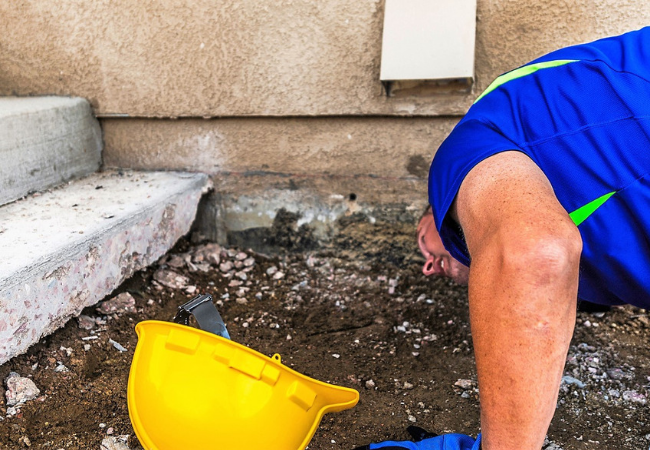How to Winterize Your Home Foundation

With our winter season arriving, as a homeowner you should take some steps to winterize your foundation against the colder, wetter weather. This is not something you should overlook, as the foundation of your home is literally the base for the entire structure which rests upon it, supporting everything inside your home. Here are some tips that will help prepare your home’s foundation for winter.
Protect Your Foundation Against Winter Storms
Take these steps this month to winterize your foundation:
Visual inspection
Begin by making a thorough inspection of the foundation, looking for any holes or cracks which may have developed since last winter. Smaller cracks can easily be filled in with mortar or some kind of expanding foam material which is available in your local hardware store. It’s important that these small cracks get filled in, so as to prevent cold air, moisture and even small rodents from invading your basement. If you spot any larger cracks during this inspection, it may indicate a shifting of the soil around the foundation, and for this you should consult a foundation expert or local structural engineer.
Remove vegetation
If any weeds have grown up around your foundation, these should be killed and removed completely, so they don’t have the chance to trap moisture close to the structure. In addition, plant roots can slowly uplift the soil under a foundation and cause it to deform and crack. Trees should not be planted close to the house! After you’ve removed all weeds and other growth from the vicinity of the foundation, you should ensure that all cellar doors and vents are tightly closed and sealed against entry by rodents or other vermin. If you have any crawlspaces in the foundation, it would be a good idea to inspect them for any kind of water damage or infestations by unwanted visitors. Crawlspaces can be pretty tight areas to go through, so proceed with caution or hire a pest inspector or structural engineer.
Fix Major Cracks and Holes
It’s possible that your annual foundation inspection uncovers some kind of major development which will require the investigation of a foundation expert. These can be major cracks in the foundation walls, any type of holes which have been produced in the foundation, or an obvious shifting of the soil around foundation walls. When this happens, don’t leave it to chance and hope that nothing serious will develop from it.
Helical Anchor Installations by Lassiter Excavating
The Lassiter team has provided specialized expertise in re-mediating foundation issues since 1989, including pier drilling and helical anchor installation, so for any questions about shoring up your foundation, be sure to contact Lassiter.

